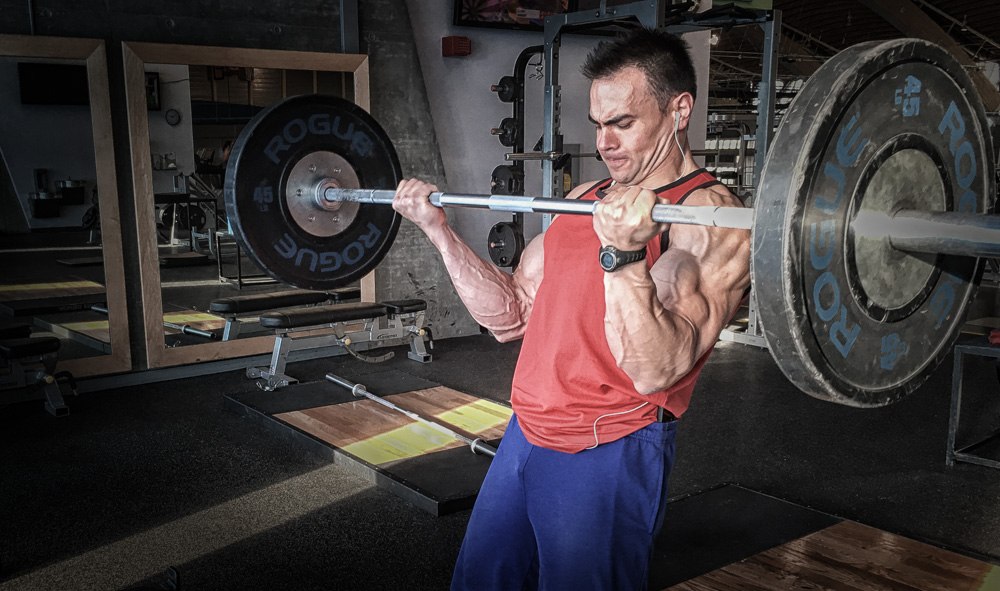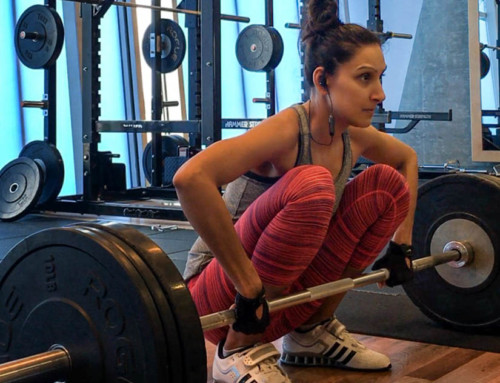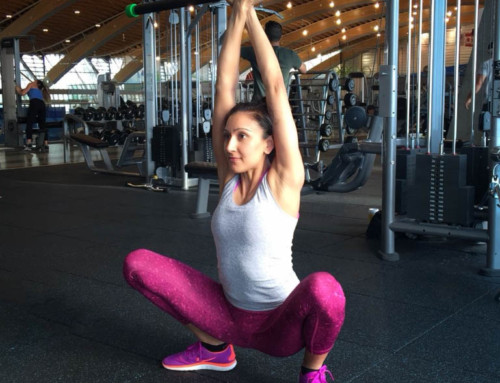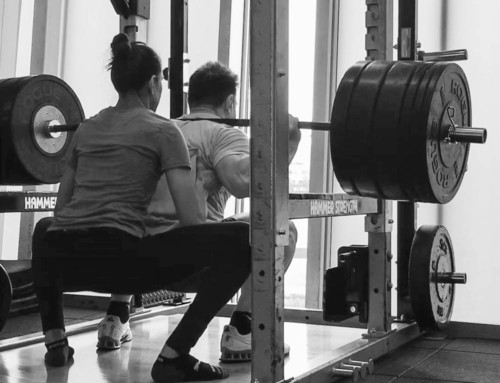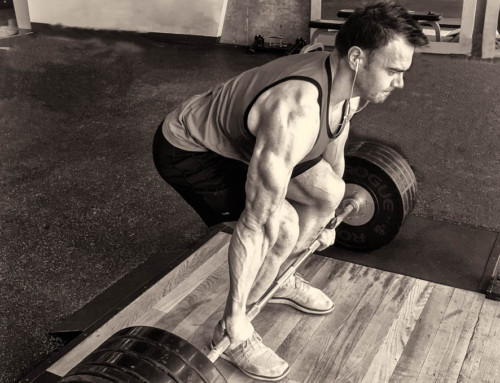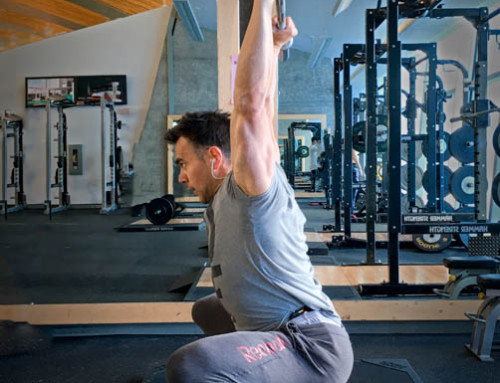Strength is an ability to generate force. To accomplish this, the body engages its nervous, muscular and energy systems. In order to maximize or improve our strength potentials, we need to look into body components that produce and increase this biomotor ability. Research and practical trials into strength development are continuously generating further advancements of understanding. In this article, we’ll discuss neuromuscular system function in production of force and strength increase.
Neuromuscular System Simplified
Neuromuscular system is simply the combination of the nervous system (the brain, spinal cord and nerves) and muscles, working together to permit movement.
Body movement is possible through communication of messages between the brain and muscles via specialized nerve cells or neurons. Neurons are long tubes with root-like branches at the end. They are filled with cytoplasm which conducts electricity and is a method of transmitting messages between Central Nervous System (CNS) to the muscles and organs. Neuron’s tail contains many branch-like tentacles connecting (or innervating) to a number of muscle cells fibers. The number of muscle fibers each neuron can innervate range from tens to hundreds. Together the neuron and its associated muscle fibers are called a motor unit.
As we previously discussed, muscle tissue consists of long, thin, spaghetti like muscle cells called myocytes or muscle fibers. Each muscle fiber contains even thinner long tubes (thinner than angel hair pasta) called myofibrils. These myofibrils are made up of repeated portions called sarcomeres. Each sarcomere contains contractile proteins (thick—myosin, and thin—actin) that slide against each other shortening and relaxing the sarcomere itself. Hundreds to thousands of sarcomeres simultaneously shortening create muscle contractions generating body movements and balance.
There are different types of motor units but for simplicity, most can be classified into fast-twitch and slow-twitch units.
- Fast-twitch as the name suggests are larger, more powerful and easily fatiguable.
- Slow-twitch units are smaller in size, are not as strong but can continuously produce contractions for extended time periods.
Movement — Contractile Strength and Speed
The body is able to produce “slow and balanced” style movements one minute, like placing one foot in front of the other during leisurely walk; or “fast and explosive” movements, such as extending your hands in-front of you during an accidental fall. We can also quickly change the strength level within our movements, such as, picking up a pen and then a heavy dumbbell with the same hand. The body contains necessary machinery to produce movements varying in speed, strength, and duration in order to carry out daily physical tasks. This is done as the brain recruits and activates different motor units, by sending electic-impulse signals (action potential) from spinal cord via nerve cell to associated muscle fibers. Based on the task at hand, the signals are sent more or less frequently. The more frequent the message, the greater the activation of recruited muscle fibers, forcing stronger overall contractions.
To increase the strength and produce more force during a specific activity, the body goes about it in two ways:
- by increasing number of active motor units performing work — recruitment, and
- by increasing the contractile strength of active motor units — rate coding.
The simplest method to improve force or maintain specific level of work for longer periods is through quantity — by recruiting more motor units. Motor units are recruited based on the size principle from the smallest to the largest. This method is often effective during sub-maximal intensities consisting up to 80% of your maximum effort. Recruiting fast-twitch units is a harder proposition, an ability that needs to be continuously trained. The body always chooses a more economical pathway by doing more with less.
Greater intensities, loads north of 85% of your maximum effort engage the quality — contractile magnitude. The body begins to produce stronger contractions within already activated motor units. Each active motor unit goes through a standard stimulation and relaxation period, where an electro-chemical signal is sent from CNS producing mini-contractions. Such contractions can be measured in terms of intensity. After contractile period, stimulated motor unit relaxes, where contractile proteins slide back and sarcomeres are returned to original length.
During high intense physical efforts, CNS continues to increase signal frequency even after most motor units that were able to be recruited are now active. This increase of signal frequency is referred as rate coding. Increase in rate coding forces active units to contract with very little or no relaxation period (rest). Rate coding essentially overlaps activations of the same motor unit’s previous and upcoming contractions, by minimizing or eliminating relaxation period — generating a deeper, stronger overall contractile intensity. Eventually, muscle fibers stimulated so frequently that they are unable to relax at all, creating a one big, continuous contraction — tetanus. Such intensity causes significant micro-trauma to contractile proteins, myofibrils and whole muscle fibers.
The Importance of Technique
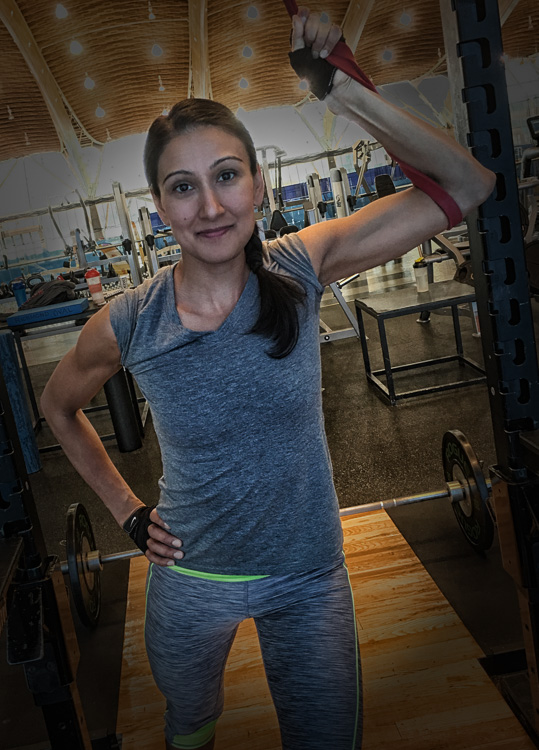 Before moving on, lets talk about the movement itself and what it takes to produce, increase and improve it for overall health and wellbeing. Body movement consist of continuous motor unit activations translating into isotonic or isometric contractions. Isotonic contraction is physical change of the muscle by either becoming shorter, referred to concentric contraction; or longer, referred to as eccentric contraction. When muscle contraction without noticeable physical change within its shape is referred to as isometric contraction.
Before moving on, lets talk about the movement itself and what it takes to produce, increase and improve it for overall health and wellbeing. Body movement consist of continuous motor unit activations translating into isotonic or isometric contractions. Isotonic contraction is physical change of the muscle by either becoming shorter, referred to concentric contraction; or longer, referred to as eccentric contraction. When muscle contraction without noticeable physical change within its shape is referred to as isometric contraction.
Other skills such as balance, mobility and flexibility all partake in generating movements. Strength is an ability for the body to produce force through a particular movement. The more you practice generating force through such movement, the better you become in executing it. Through repetition, you engage neural and muscular pathways rehearsing movement patters resulting in productive and efficient lifts. An example of this would be warm-up repetitions, where by performing a certain movement with light load or bodyweight, recruits motor units and engages neural patterns. This translates in overall better quality and stronger lift, even though the warm-up sets have generated some level of fatigue within same working muscles.
In relation to training body movements, technique comes into effect. To many, technique is simply a reference to a proper method of executing an exercise with resistance. But, technique also trains specific pattern in which some body parts engage (concentrically and/or eccentrically) while other body parts resist (isometrically).
Since one of our favourite exercises at Science and Strength is the squat, we’ll use it as example. The squat, even at bodyweight requires balance to keep the body (and additional resistance) centred. Furthermore, squats require hip and ankle flexibility to achieve full depth. During the squat — quadriceps, gluteus maximus and hamstring group muscles produce movements by acting on tibia, and femur to flex (bend) and extend (straighten) the knee joints. Also during squat, the core (including abdominal wall and spine) and back muscles resist the forward lean (unwanted flexion) in order keeping the body upright — part of the balance. So, a classic squat movement consists of multiple factors that play a role in its proper execution.
Technique is often referenced as a separate entity from strength, but both are important aspects of training your motor skills. All movements engage neural and muscular pathways. By teaching the body proper movement patters, you simultaneously practice that particular motor skill. Adding resistance to a training movement, engages the body to generate more force through stronger contractions of neuromuscular pathways including inter- and intramuscular coordination.
Final Thoughts
Strength is an ability to produce force through movement and/or balance. This occurs through recruiting motor units from small slow-twitch to larger fast-twitch. The body is able to produce greater force by recruiting more motor units while increasing contractile intensity through rate coding of already active muscle fibers.
In order to generate force, practice of proper movements needs to be emphasized in the beginning and throughout each training session. Technique for each exercise enhances neural and muscular pathways improving overall movement, which then can be repeated with additional resistance, generating greater levels of force.
If you liked this article, please share it with your friends! You may also be interested in our Strength Training Book and Programs Stronger Learner Faster Training Him and Stronger Learner Faster Training Her.

